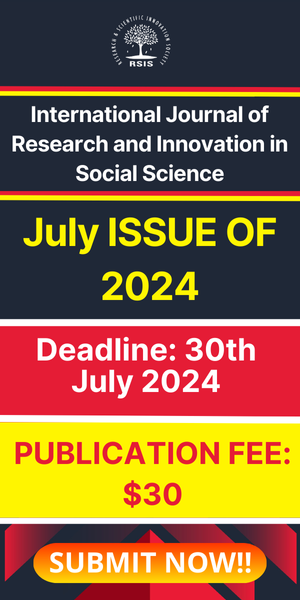Conversion of Waste Fluted Pumpkin (Telfairia Occidentalis Hook.F) Leave in to Bio Electricity Using Microbial Fuel Cells (Mfcs) Application
- December 10, 2021
- Posted by: rsispostadmin
- Categories: IJRIAS, Physics
International Journal of Research and Innovation in Applied Science (IJRIAS) | Volume VI, Issue XI, November 2021|ISSN 2454-6194
Ogobiri Godwin1, Anyalebechi Onyebuchi2
1Department of Physics, Niger Delta University, Bayelsa State, Nigeria
2Department of Physics, University of Port Harcourt Rivers State, Nigeria
Abstract – A double chamber microbial fuel cells technology has been applied on defective leave of fluted pumpkin (Telfairia occidentialis Hook.F) through the conversion of its waste leave into Bioelectricity. Adopting method of research fabrication described by Karmau etal (2017) the result of the voltage of 4.5V against 0.3V from the 2.5kg sample, current density (j) of 113A/m2 and power (p) of 2.0W in 120hours. The result present linearity in increase in voltage, power density, current density and power. It is likely that a slight increase in the system temperature enhanced a corresponding decrease in internal resistance of the electrolyte leading to ionic mobility and conductance as concentration increase with leave decomposition. Therefore, processing of waste or defective fluted pumpkin (Telfairia occidentialis Hook.F) leave via Microbial fuel cell application can be a good source of green electricity generation and a good step on its waste management.
I. INTRODUCTION
Microbial fuel cells (MFCs) technology has gained tremendous attention of researchers in recent times. It is emphasized when conversion of organic waste to clean and green energy in the form of electricity is prioritized (Kamanu etal, 2017). The technology is a means of waste management and a transition path to low carbon community (Nastro etal, 2017). As a bio-electrochemical system (BES), MFCs produce green electricity from organic waste by trapping microbial power (patit etal 2018, Keith etal 2018, Yifeng etal, 2009).
Microbial fuel cells (MFCs) can generate chemical energy from several classes of organic waste with the potential to effectively convert it to electrical energy (Nastro etal, 2017). This means that microbial fuel cells (MFCs) is a good alternative for management of organic waste through direct conversion into electricity. Organic waste can contaminate and pollute the environment if left unchecked or poorly managed. As organic wastes that can contaminate environment Fluted Pumpkin (Felfairia Occidentalis Hook. F) is a creeping vegetable shrub that spread slowly across the ground with broad lobes leaves and long twisting tendrils rich in antioxidants and dietary fibre (Harsfall and Spiff, 2005, Kayode etal, 2011). Telfairia Occidentalis (Fluted Pumpkin) is the highest consumed vegetable in the West African sub-region and Nigeria in particular as it is reported to have good nutritional and medicinal values (Akang etal 2019, Fabuyi 2008 and Ganiyu 2005). The seed is reported to contain about 28.88% of protein with crude fat content of 58.41% and good


